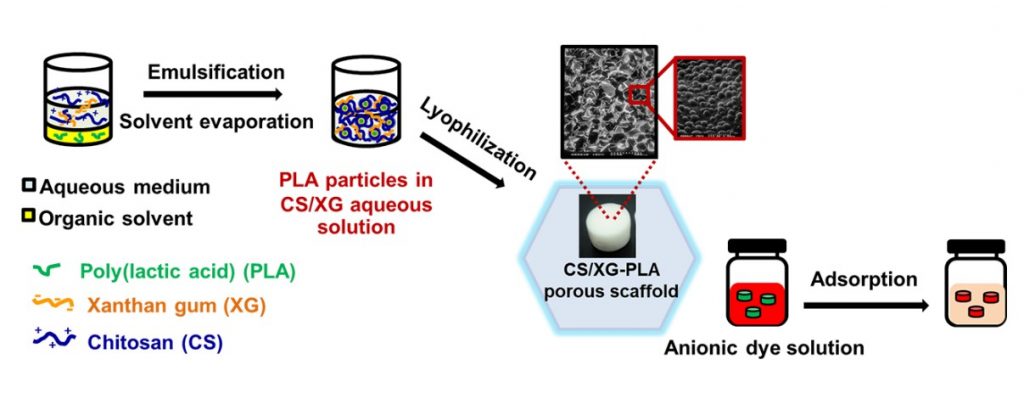Chitosan/xanthan gum porous scaffolds incorporated with in-situ-formed poly(lactic acid) particles: Their fabrication and ability to adsorb anionic compounds
Inphonlek S.a,Niamsiri N.b,Sunintaboon P.a,Sirisinha C.c
a Department of Chemistry, Faculty of Science, Mahidol University, Rama VI Road, Phayathai, 10400, Thailand
b Department of Biotechnology, Faculty of Science, Mahidol University, Rama VI Road, Phayathai, 10400, Thailand
c Rubber Technology Research Centre (RTEC), Faculty of Science, Mahidol University, Salaya Campus, Phutthamonthon IV Road, Salaya, 73170, Thailand
Porous scaffolds based on chitosan (CS)/xanthan gum (XG) incorporated with the in-situ-formed poly(lactic acid) particles (CS/XG-PLA) were fabricated through emulsification-solvent evaporation and followed by lyophilization. The optimum concentrations of CS and XG used for scaffold preparation were 0.80 wt% and 0.20 wt%, respectively. The CS/XG-PLA scaffolds had the porosity in the range of 82.4–85.1 %, when the PLA was varied from 0.20 to 1.00 wt%. Their porous structure with 70.8–100.2 μm pore size was determined by scanning electron microscopic images. The presence of XG resulted in the improved physical stability of the scaffolds in aqueous media and the incorporation of PLA particles increased their modulus. The CS/XG-PLA scaffold prepared by using PLA 1.00 wt% had the maximum adsorption capacity of 259.94 mg/g for FD&C Red40 dye, the anionic model compound. The behavior of anionic dye removal by the CS/XG-PLA scaffold is fitted with the pseudo second-order kinetic model and the Langmuir isotherm adsorption model. In addition, the CS/XG-PLA scaffold can maintain the removal efficiency for up to 5 cycles and selectively remove anionic dye from the mixture of anionic/cationic dyes. Thus, these bio-based porous scaffolds fabricated by a simple approach from sustainable resources are potential adsorbents for capturing and separating anionic compounds.

Keywords: Anionic dye; Anionic molecule adsorption; Chitosan; Poly(lactic acid); Porous scaffold; Xanthan gum
For more details: Colloids and Surfaces A: Physicochemical and Engineering AspectsVolume 60320 October 2020 Article number 125263.
